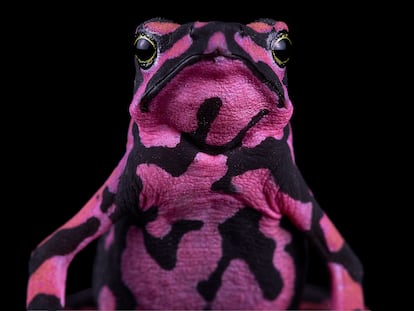The World War II bunker where birds of prey are tagged
The bomb shelter – built in Spain under Franco to repel an Allied attack that never occurred – was converted into an improvised scientific lab, to track the movements and lives of birds
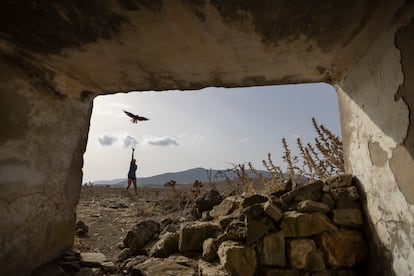
The bunker, built during World War II, stands alone on a disused farm near the Spanish city of Tarifa, at the southernmost end of the Iberian Peninsula. A few feet away, 34 birds of prey – black kites – flutter around, unable to escape from a large cage-trap. The structure has been set up by the Migres Foundation to retain and tag them.
In about half-an-hour, Alejandro Onrubia – the coordinator of the organization – and volunteers from European and American universities will stuff each bird into a white cloth bag. From there, they are immediately moved (the less they suffer, the better) to a concrete fort, which, for a couple of hours, will be converted into an improvised scientific laboratory.
The latest stage of this conservation campaign, which ran from July to September of 2023, saw 540 black kites pass through the former bunker.
Who would have thought to tell Spanish dictator Francisco Franco’s intelligence services that this military structure – built between 1939 and 1945 as part of the defensive wall against a possible occupation by the Allies – would be reused, decades later, as part of a project to conserve biodiversity?
In 1939, the Spanish Civil War had just ended. The country – “destroyed and hungry,” explains historian Ángel Sáez – saw “enormous resources” applied to the possibility of an Allied invasion as World War II broke out. While the feared attack never occurred, Franco’s regime left behind about 600 reinforced concrete buildings as a memory of those times. Today, just over 300 of them are still standing, dotting about 75 miles of Spain’s coast, without any use. “There’s no plan to preserve them, so several are disappearing,” Sáez warns.
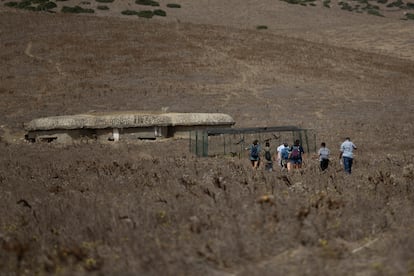
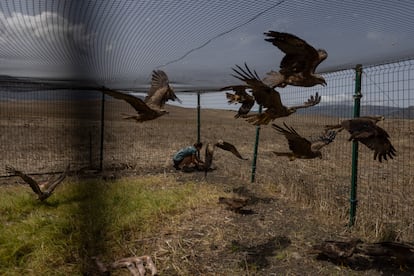

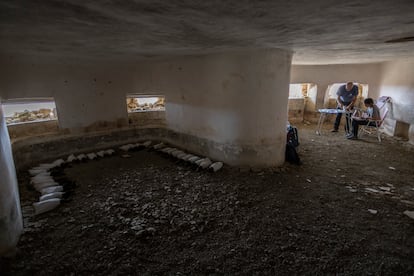
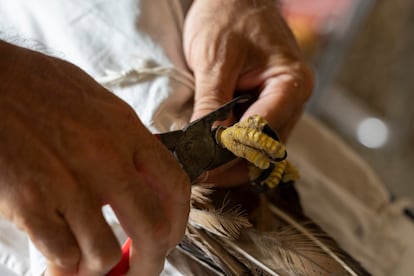
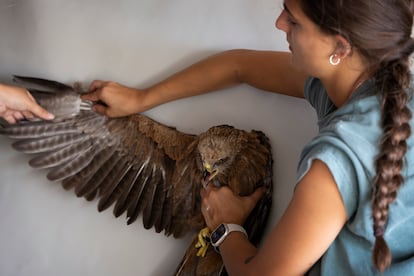
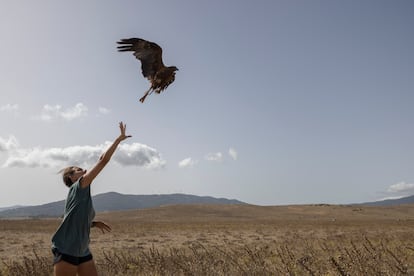
The shelter that the Migres Foundation uses is “in an exceptional state of conservation,” Sáez explains. You have to climb a bit to get through the entrance, but once inside, the hallway that leads to the combat chambers is in perfect condition. In the shortest possible time, the birds of prey are placed on the floor of the central nave in a semicircle. They remain still inside the bags that prevent them from moving and seeing – it’s as if they want to disappear. “It’s a form of defense, playing dead,” Onrubia says.
In this setting of peeling but still firm walls, the researcher and his assistants have deployed an improvised and simple laboratory: two portable tables, several beach chairs, hypodermic needles, test tubes, a scale for weighing the birds, the material for banding, rulers and measuring gauges. The scenario seems unreal.
There’s a rush to finish quickly and let the kites fly free. First, they are weighed and banded. Each bird’s age is determined. From there, they are moved to the second area, where blood and cloacal samples are taken. Then, in the final step, one of the students photographs the wings of the specimens for research, while another holds them against the wall. At this point, the birds are no longer covered by any fabric. Despite this, they behave well, given the stressful situation they’re experiencing… although you still have to be careful with their beaks and claws.
Throughout this process, the researchers document the feather molt, because depending on the moment in which the plumage changes, the age of the individual bird can be determined. It’s also possible to see whether the bird has bred or not, or even where they come from. “And, of course, [we can observe] the physical condition [of the birds], because their feathers grow better if they’re well-fed,” Onrubia adds. The researchers try to understand migratory patterns, how long the birds live and what problems they encounter on their journey. They face several risks: they can be electrocuted, they can collide with wind turbines, or someone can shoot them out of the sky.
Once the study is finished, the birds are finally released, one by one. And, with the wind in their faces, they take flight without issues. Once free, they move away, towards the Strait of Gibraltar. They will then wait for the right moment to cross it, because the strength of the wind may prevent them from doing so.

Since the Migres Foundation began these studies back in 2008, they have managed to track about 3,000 kites in total. With all the information collected from the tags, they’ve created a database. In 2023 so far, 270,000 kites have crossed the Strait of Gibraltar. “The last few seasons have been record-breaking, because this is a species that’s doing well, due to a series of circumstances, such as it [being protected by law] and the expansion of forest masses. [The kites are also] opportunistic animals that can feed on anything: they can go to a garbage dump, hunt a mouse, or catch a fish,” Onrubia chuckles.
From June to October, the birds make the leap to Africa on their way to the Sahel. From February to April, they retrace their path, returning to the different countries where they come from and where they breed. The majority are Iberian and Central European, from Germany or France… although some kites hail from Scandinavia. Through genetic analysis, researchers are trying to determine if any come from Russia. They can live between 20 and 30 years, but their mortality rate is so high that half of them don’t survive their first year, while 30% of young birds die crossing the Sahara desert, either on the way there or on the way back. Onrubia emphasizes that experience is a plus. “[With more years lived], the better they deal with migration, which is demonstrated by the fact that the percentage of adults who don’t make it across the Sahara drops to 5%.”
What happens on the African continent is more complicated to determine. Onrubia details how one of the banded specimens ended up in a market in Benin, where it was sold for the purposes of voodoo. “A man bought it and managed to locate us on WhatsApp – he wanted to return the bird to us. He didn’t ask us for money… something that has happened to us on other occasions,” he sighs.
This good samaritan explained to them that it’s believed that, through certain rituals, the strength and sight of these birds can be transferred to humans. The Migres Foundation has never paid anyone who has asked for money in exchange for a tagged bird, because they would then be encouraging poachers to trap the creatures for ransom. “We explain the project to them and try to convince them to release the birds,” Onrubia says.
Sign up for our weekly newsletter to get more English-language news coverage from EL PAÍS USA Edition
Tu suscripción se está usando en otro dispositivo
¿Quieres añadir otro usuario a tu suscripción?
Si continúas leyendo en este dispositivo, no se podrá leer en el otro.
FlechaTu suscripción se está usando en otro dispositivo y solo puedes acceder a EL PAÍS desde un dispositivo a la vez.
Si quieres compartir tu cuenta, cambia tu suscripción a la modalidad Premium, así podrás añadir otro usuario. Cada uno accederá con su propia cuenta de email, lo que os permitirá personalizar vuestra experiencia en EL PAÍS.
¿Tienes una suscripción de empresa? Accede aquí para contratar más cuentas.
En el caso de no saber quién está usando tu cuenta, te recomendamos cambiar tu contraseña aquí.
Si decides continuar compartiendo tu cuenta, este mensaje se mostrará en tu dispositivo y en el de la otra persona que está usando tu cuenta de forma indefinida, afectando a tu experiencia de lectura. Puedes consultar aquí los términos y condiciones de la suscripción digital.
More information
Archived In
Últimas noticias
Most viewed
- Reinhard Genzel, Nobel laureate in physics: ‘One-minute videos will never give you the truth’
- Pablo Escobar’s hippos: A serious environmental problem, 40 years on
- Charles Dubouloz, mountaineering star, retires at 36 with a farewell tour inspired by Walter Bonatti
- Why we lost the habit of sleeping in two segments and how that changed our sense of time
- The fall of a prolific science journal exposes the billion-dollar profits of scientific publishing

